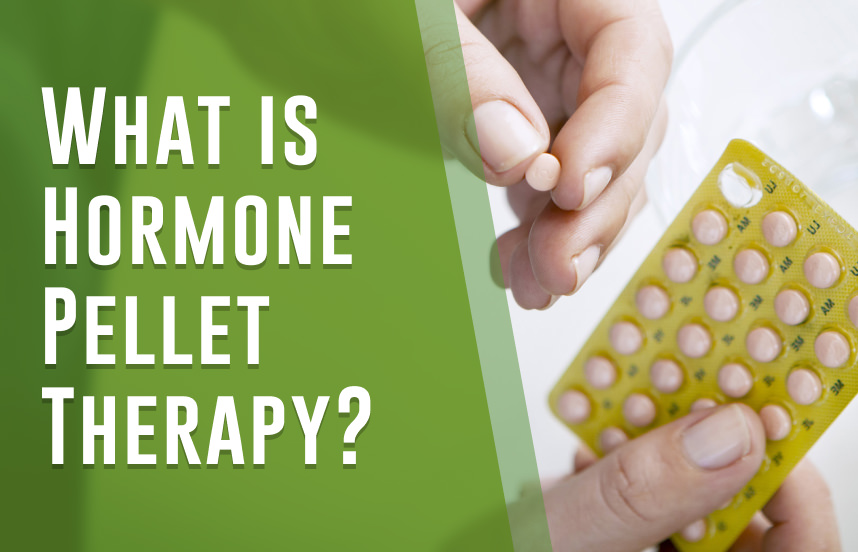
Hormone Pellet Therapy
What is hormone pellet therapy? Hormone therapy is a treatment in which hormones are administered to restore hormonal balance in the body. Hormonal imbalances can result in a variety of symptoms and health issues. Hormone pellets are a form of hormone therapy because of their convenience and efficacy. They have gained popularity in recent years. This article will discuss hormone therapy and the significance of hormone balance. It will also delve into what hormone pellets are, how they work, their indications and uses, the insertion process, safety and efficacy, cost, insurance coverage, and accessibility.
Explanation of Hormone Therapy
Hormone therapy involves administering hormones to replace or supplement the body’s natural hormones that may be deficient or imbalanced. It alleviates symptoms and improves the quality of life in both men and women. Hormone therapy can be administered in several forms, including pills, patches, creams, gels, injections, and pellets.
Hormone pellets are small, rice-sized pellets inserted under the skin, typically in the hip or buttock area. They are composed of either estradiol (a form of estrogen) or testosterone, or a combination of the two. Hormone pellets provide consistent hormone levels for three to six months, depending on the individual’s needs.
Importance of Hormone Balance
Hormonal imbalances can have a significant impact on overall health and well-being. Hormones play an essential role in the regulation of numerous bodily functions. Bodily functions, including metabolism, sexual function, mood, and energy levels. Imbalanced hormone levels can result in multiple symptoms, including fatigue, weight gain, depression, anxiety, decreased libido, and hot flashes. Maintaining hormonal balance is essential for optimal health and quality of life.
What are Hormone Pellets?
- Definition and Explanation
Hormone pellets are small, subcutaneous implants that contain hormones. Usually crafted from a plant-based material such as yam or soy, they are bioidentical to human hormones. Bioidentical hormones are molecularly identical to endogenous hormones, safer, and more effective than synthetic hormones. - History and Development
People in the United States have received hormone pellet therapy since the 1930s. This therapy treats menopausal symptoms in women initially. Hormone pellets manufacturers made the first hormone pellets from animal hormones, such as horse estrogen, and they associated it with significant side effects. In the 1980s, clinical studies established the safety and effectiveness of bioidentical hormone pellets, which then gained popularity. - Composition and Types
Estradiol pellets treat menopausal symptoms in women and consist of estradiol, testosterone, or a combination. In contrast, testosterone pellets treat hormonal imbalances in both men and women. Several hormone pellets are available, including those that contain estrogen only, testosterone only, or a combination of estrogen and testosterone.
How do Hormone Pellets Work?
- Mechanism of Action
Hormone pellets provide a steady and consistent release of hormones into the bloodstream. The pellets are inserted under the skin, gradually dissolving and releasing hormones over three to six months. The hormones in the pellets are bioidentical to the hormones produced by the body, which allows for more effective and safer hormone replacement therapy. - Effects on the Body
Hormone pellets can have a wide range of effects on the body, depending on the individual’s hormonal imbalances and deficiencies. Hormone pellets can alleviate menopausal symptoms such as hot flashes, vaginal dryness, and mood swings in women. In men, hormone pellets can help to increase testosterone levels and improve symptoms of andropause, such as fatigue, decreased libido, and muscle loss. Hormone pellets can also help to improve bone density, skin elasticity, and overall energy levels. - Advantages and Disadvantages
One of the main advantages of hormone pellets is that they provide a sustained and consistent release of hormones, which can result in more stable hormone levels and fewer symptoms. Compared to other types of hormone therapy, hormone pellets carry a low risk of side effects. Although hormone pellets are an effective treatment, they have a few drawbacks, such as the requirement for frequent insertions, potential complications like infection or pellet extrusion, and the expense involved in the treatment.
Hormone Pellet Therapy: Indications and Uses
- Hormonal Imbalances and Deficiencies
Hormone pellet therapy treats hormonal imbalances and deficiencies in both men and women. Hormonal imbalances can occur due to aging, stress, medical conditions, or other factors. Hormone pellets can help to restore hormonal balance and alleviate symptoms. - Menopause and Perimenopause
Hormone pellet therapy is commonly used to treat symptoms of menopause and perimenopause in women. Pellets containing hormones can help alleviate symptoms such as hot flashes, vaginal dryness, and mood swings. - Andropause
Hormone pellet therapy can also be used to treat symptoms of andropause in men. Andropause is a condition that occurs when testosterone levels decline with age. Hormone pellets can help to increase testosterone levels and improve symptoms such as fatigue, decreased libido, and muscle loss. - Other Indications
Hormone pellet therapy may also treat other conditions, such as thyroid disorders, adrenal disorders, and fibromyalgia. However, additional research is required to determine the effectiveness of hormone pellet therapy for these conditions.
The Hormone Pellet Insertion Process
- Patient Preparation
Before hormone pellet insertion, patients undergo a thorough medical evaluation and hormonal testing to determine their hormone needs. Before surgery, healthcare providers may require patients to stop taking certain medications, such as blood thinners. Patients should also inform their healthcare provider of any allergies or medical conditions. - Procedure Steps
The healthcare provider typically performs the hormone pellet insertion procedure in their office, which takes less than 30 minutes. The insertion site will be numbed with a local anesthetic, and a small incision will be made in the skin. The pellets will then be inserted under the skin using a specialized device. Sutures or adhesive strips are utilized to close the incision. - Potential Side Effects
Potential side effects of hormone pellet insertion include infection, bleeding, bruising, and extrusion of the pellets. Additionally, patients should be aware of possible hormonal side effects, including acne, hair loss, and mood changes. Patients should contact their healthcare provider if they experience any concerning symptoms.
Hormone Pellets: Safety and Efficacy
- Review of Clinical Studies
Several clinical studies have demonstrated the safety and efficacy of hormone pellet therapy for treating hormonal imbalances and deficiencies. Hormone pellets can improve symptoms of menopause, andropause, and other hormonal conditions. - Common Misconceptions
There are some misconceptions about hormone pellet therapy, including the belief that it is not safe or effective. However, studies have shown that hormone pellets are a safe and effective hormone therapy. - Risks and Potential Complications
Like any medical procedure, hormone pellet insertion carries risks and potential complications. Patients should be aware of these risks and discuss them with their healthcare provider before undergoing the procedure. Possible complications include infection, bleeding, bruising, extrusion of the pellets, and hormonal side effects such as acne, hair loss, and mood changes.
Hormone Pellet Therapy: Cost and Insurance Coverage
- Cost of Hormone Pellets
The cost of hormone pellets varies depending on the patient’s hormone needs, the type of pellets used, and the healthcare provider’s fees. However, hormone pellets are generally more expensive than other forms of hormone therapy, such as oral medications or topical creams. - Insurance Coverage
Insurance coverage for hormone pellet therapy varies depending on the patient’s insurance plan and the indication for the treatment. Some insurance policies may cover the cost of hormone pellets to treat specific conditions. In contrast, others may not cover the treatment at all. - Availability and Accessibility
Hormone pellet therapy is not widely available in all areas. Patients may need to travel to find a healthcare provider who offers the treatment. Patients should research healthcare providers specializing in hormone pellet insertion since not all providers are trained.
Summary of Main Points
Hormone pellet therapy involves the placement of hormone pellets under the skin, providing a consistent and sustained release of hormones that can aid in restoring hormonal balance and alleviate symptoms associated with hormonal imbalances and deficiencies. Patients frequently use this therapy to treat symptoms of menopause, perimenopause, and andropause. They may also treat other ailments, including thyroid disorders and fibromyalgia.
Future Directions and Research
It requires ongoing research to evaluate the safety and effectiveness of hormone pellet therapy, as with any medical treatment. Future studies may focus on identifying optimal dosing regimens and determining the long-term effects of hormone pellet therapy.
Final Thoughts and Recommendations
Hormone pellet therapy can be a safe and effective treatment option for patients with hormonal imbalances and deficiencies. However, patients should be aware of the potential risks and complications associated with the treatment. They should discuss these with their healthcare provider before undergoing the procedure. Patients should also research providers in their area who specialize in hormone pellet therapy and should work with their healthcare provider to determine the most appropriate treatment plan for their individual needs.
Overall, hormone pellet therapy offers a convenient and effective alternative to other forms of hormone therapy. By providing a consistent and sustained release of hormones, hormone pellets can help to restore hormonal balance and alleviate symptoms of hormonal imbalances and deficiencies. However, patients should be aware of the potential risks and complications associated with the treatment. They should work with their healthcare provider to determine if hormone pellet therapy suits them.
Finding a healthcare provider with experience and knowledge of the procedure is essential for patients wanting hormone pellet therapy. Patients can research providers in their area and ask for referrals from their primary care physician or gynecologist.


